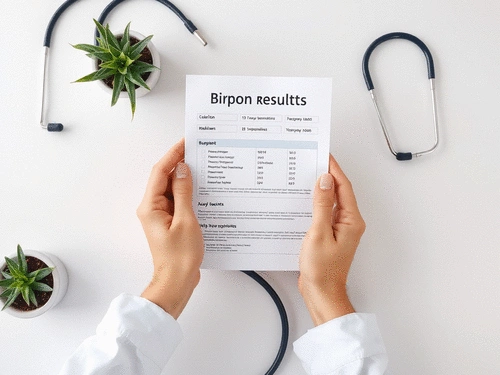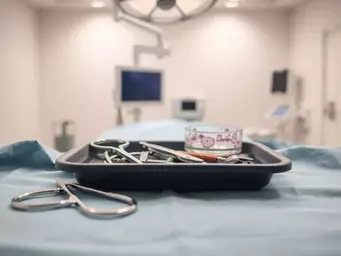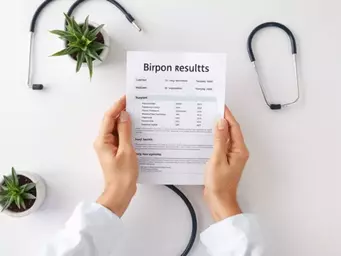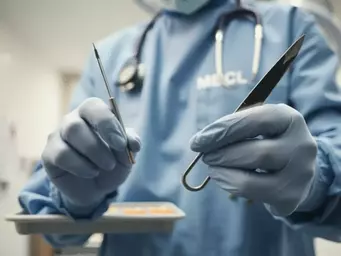Understanding the term "benign" can significantly reduce anxiety and empower you to take control of your health. As a pivotal point in your medical journey, knowing what benign biopsy results truly mean can alleviate your fears and guide your next steps.
What You Will Learn
- Definition of Benign: A benign biopsy result signifies the absence of cancerous cells, providing reassurance.
- Monitoring and Follow-Up: Regular check-ups may be recommended to track any changes in your health.
- Understanding Conditions: Familiarity with common benign conditions can ease anxiety and enhance discussions with healthcare providers.
- Emotional Well-Being: Coping strategies can help manage the stress and anxiety related to waiting for biopsy results.
- Empowerment Through Knowledge: Being informed about your diagnosis allows for better communication with your healthcare team.
Understanding Benign vs. High-Risk Biopsy Findings
This visual outlines the key differences between benign and high-risk findings and the recommended actions for each, based on your pathology report.
Benign Findings
Non-cancerous cells detected. Often no immediate threat.
- Fibroadenomas (solid, non-cancerous)
- Cysts (fluid-filled sacs)
- Fat Necrosis (damaged fatty tissue)
- Intraductal Papilloma (small duct growths)
✅ Reassurance & Monitoring
High-Risk Findings
May indicate increased risk for future breast cancer.
- Atypical Hyperplasia (abnormal cell growth)
- Radial Scars (usually benign, but monitored)
- Benign Phyllodes Tumors (rare, non-cancerous)
- Certain Calcifications (may require closer look)
⚠️ Increased Monitoring & Proactive Steps
Understanding Benign Biopsy Results: What They Really Mean
When you receive biopsy results, especially a benign diagnosis, it can bring a sense of relief. However, many patients still feel uncertain about what "benign" means in medical terms. It’s crucial to unpack these results, as understanding their implications can help you navigate your health with confidence!
At What Is A Biopsy, we strive to provide clear, accessible resources to help you demystify medical terminology. A benign result indicates that the tissue sampled does not contain cancerous cells, leading to a non-cancerous diagnosis. This distinction offers a reassuring step towards clarity in your health journey.
Defining a Benign Biopsy Result: Reassurance and Clarity
What Does "Benign" Indicate in Medical Terms?
The term benign comes from the Latin word meaning "kind" or "favorable." In the context of a biopsy, it signifies that the findings—while they may warrant monitoring—do not indicate cancer. This knowledge can be a comforting realization for many patients.
Let’s explore a few key points about benign results:
- No Cancer Cells Detected: This is the most significant takeaway!
- Monitoring May Be Recommended: Depending on the condition, regular follow-ups might be necessary.
- Positive Health Outlook: Most benign conditions do not lead to serious health issues.
Receiving a benign diagnosis can help alleviate your anxiety, allowing you to focus on your health without the looming worry of cancer.
The Importance of Receiving a Non-Cancerous Diagnosis
Understanding that your biopsy results are benign is vital for several reasons. Firstly, it provides a sense of relief, allowing patients to redirect their energy towards maintaining overall health. Additionally, it serves as a reminder that not all health concerns lead to serious conditions.
Here are a few important reasons why this diagnosis matters:
- Empowerment: Knowledge about your health fosters a sense of control.
- Actionable Steps: You can focus on lifestyle changes or preventative measures.
- Community Support: Many patients find camaraderie among others with similar benign conditions.
Ultimately, a benign diagnosis can pave the way for informed decision-making and a proactive approach to health!
Common Types of Benign Breast Conditions Explained
Identifying Common Benign Findings: From Fibroadenomas to Cysts
As a pathologist, I often encounter various benign breast conditions. Understanding these can help you feel more informed about your diagnosis. Some common findings include:
- Fibroadenomas: These are solid, non-cancerous tumors that often occur in young women.
- Cysts: Fluid-filled sacs that can develop in breast tissue, usually harmless.
- Hyperplasia: An increase in the number of cells in the breast, which can be monitored over time.
Being aware of these common conditions can help patients feel less anxious about their health.
Understanding Other Non-Cancerous Diagnoses: Fat Necrosis and More
In addition to the common findings mentioned above, there are other non-cancerous conditions that patients may encounter. For instance, fat necrosis occurs when fatty tissue in the breast becomes damaged, often due to injury or surgery. It typically resolves on its own.
Some additional benign conditions include:
- Intraductal Papilloma: Small, wart-like growths in the ducts of the breast.
- Calcifications: Tiny deposits of calcium that can show up on mammograms; most are benign.
- Benign Phyllodes Tumors: Rare fibroepithelial tumors that are non-cancerous.
Understanding these conditions can help you feel more prepared and informed during discussions with your healthcare provider!
Decoding Your Pathology Report: Key Terms to Know
Common Pathology Terms Simplified: Hyperplasia, Radial Scars, and Others
Your pathology report may contain several terms that seem complex at first glance. However, breaking them down can make them easier to understand. For example, hyperplasia refers to an increase in the number of normal cells, which can be benign.
Here are some key terms you might find:
- Radial Scars: They can appear suspicious but are usually benign.
- Atypical Hyperplasia: Indicates changes in cells that may require monitoring.
- Malignancy: Indicates cancer, a term you definitely want to avoid!
Familiarizing yourself with these terms can help ease concerns and clarify your diagnosis.
How to Interpret Your Breast Pathology Report Effectively
Reading and understanding your pathology report is an important skill. Start by discussing it with your healthcare provider, who can help clarify any confusing aspects. Often, reports include sections on the type of tissue, findings, and recommendations for follow-up.
Consider these steps for effective interpretation:
- Ask Questions: No question is too small—your health is at stake!
- Take Notes: Jotting down important points can help during follow-up visits.
- Seek a Second Opinion: If unsure, don’t hesitate to get another perspective.
This proactive approach can empower you with knowledge and reduce anxiety.
The Role of Histopathology in Understanding Your Diagnosis
Histopathology plays a crucial role in identifying and understanding various conditions. This field of study involves examining tissue samples under a microscope, allowing pathologists to determine the nature of the cells. It provides invaluable insights that guide diagnosis and treatment.
Through histopathological analysis, we can:
- Identify Cell Types: This helps differentiate between benign and malignant cells.
- Assess Tissue Structure: Understanding how cells are organized is essential for accurate diagnosis.
- Monitor Changes Over Time: Regular assessments can alert us to any new developments.
Histopathology offers a powerful lens into your health, helping to clarify your diagnosis and guide future decisions.
Navigating Next Steps After a Benign Biopsy
When No Further Treatment is Needed: Understanding the Protocol
Receiving a benign diagnosis often means that no further treatment is necessary. In many cases, your healthcare provider may suggest routine monitoring instead. This approach allows you to keep an eye on your health without jumping into unnecessary interventions.
Key points to remember include:
- Regular Check-Ups: Continue attending your scheduled appointments!
- Self-Monitoring: Be aware of any changes in your body.
- Stay Informed: Understand your condition and what to watch for.
Following these protocols can ensure that you remain proactive about your health!
Monitoring and Follow-Up: Knowing When to Seek Further Care
Even after a benign diagnosis, it’s essential to know when to seek further care. Regular monitoring is crucial, especially if your doctor has advised it. Stay vigilant for any significant changes in your health and communicate with your healthcare provider.
Here are some signs that may require follow-up:
- New Symptoms: Any sudden or unusual changes should be reported.
- Changes in Existing Conditions: If symptoms worsen or evolve, let your doctor know.
- Emotional Distress: Don’t hesitate to discuss mental health concerns related to your diagnosis.
Keeping an open dialogue with your provider can lead to better health outcomes and peace of mind.
Understanding Biopsy Techniques: Fine Needle Aspiration vs. Core Needle Biopsy
It's important to understand the differences between biopsy techniques as they play a role in diagnosing benign conditions. The two most common methods are fine needle aspiration (FNA) and core needle biopsy (CNB).
Here’s a brief comparison:
| Technique | Description | When Used |
|---|---|---|
| Fine Needle Aspiration (FNA) | Uses a thin needle to collect a small amount of tissue or fluid. | Often used for cysts or superficial masses. |
| Core Needle Biopsy (CNB) | Uses a thicker needle to remove a core of tissue for analysis. | Typically used when more tissue is needed for a definitive diagnosis. |
Understanding these techniques can help you feel more informed about your biopsy process and what to expect during your healthcare journey.
Distinguishing Between Benign and High-Risk Findings
Recognizing Atypical Hyperplasia and Other Risk Factors
It’s essential to differentiate between benign findings and those that may carry higher risks. Atypical hyperplasia, for example, is a condition characterized by abnormal cell growth. Although it’s not cancer, it can indicate an increased risk of developing breast cancer in the future.
Being aware of these risk factors can help you take proactive steps:
- Regular Screenings: Stay on top of mammograms and other tests.
- Healthy Lifestyle Choices: Diet and exercise play a vital role in reducing cancer risk.
- Open Communication: Discuss any concerns with your healthcare provider.
Understanding your risk can empower you to make informed health decisions!
Understanding Future Cancer Risk: What It Means for You
While benign diagnoses typically do not lead to cancer, it’s wise to stay informed about your future risks. Engaging in discussions with your healthcare provider about your individual risk factors and family history can help clarify your situation.
Consider these points regarding future cancer risk:
- Family History: Genetic predispositions can influence your risk.
- Age: Risk factors can increase with age.
- Personal Health History: Previous conditions can dictate future risks.
Being proactive about your health can make a significant difference in your long-term wellness!
Addressing Emotional Well-Being After a Biopsy
Coping Strategies for Anxiety During the Waiting Period
Waiting for biopsy results can be a nerve-wracking experience. It’s normal to feel anxious during this period, but there are strategies to help manage this stress. Engaging in calming activities, like meditation or deep breathing, can offer relief.
Here are some coping strategies you might find helpful:
- Stay Occupied: Distracting yourself with hobbies or activities can ease anxiety.
- Reach Out for Support: Talk to friends or family about your feelings.
- Limit Information Overload: Avoid excessive research that may heighten your anxiety.
Focusing on self-care and emotional well-being is vital during this time!
Communicating with Your Healthcare Provider: Building Trust and Understanding
Establishing a good relationship with your healthcare provider is essential for navigating your health journey. Open communication fosters trust and helps ensure that you feel supported throughout the process. Don’t hesitate to ask questions or express concerns!
Consider these tips for effective communication:
- Prepare Questions: Write down your questions before appointments to ensure you don’t forget any!
- Be Open: Share your feelings and concerns honestly with your provider.
- Seek Clarity: If something is unclear, ask for further explanation.
Building this rapport can enhance your overall healthcare experience.
Recognizing Symptoms of Health Anxiety After a Diagnosis
After receiving your results, it’s crucial to monitor your emotional health. Some patients may experience heightened anxiety or concerns about their future health. Recognizing these symptoms early on can help you address them effectively.
Some common symptoms of health anxiety include:
- Persistent Worry: Constantly thinking about your health status.
- Avoidance Behaviors: Steering clear of certain activities due to health fears.
- Physical Symptoms: Experiencing stress-related symptoms like headaches or stomach issues.
If you find yourself experiencing these symptoms, reaching out for support can make a significant difference!
Enhancing Engagement with Visual Content
Utilizing Infographics to Illustrate Benign Conditions
Visual content can enhance understanding and retention of information. Infographics are particularly effective in breaking down complex medical concepts into digestible visuals. They can provide quick-reference guides for understanding benign conditions and their implications.
Consider incorporating infographics to illustrate:
- Common benign breast conditions
- Symptoms and what to look for
- Self-care strategies after a biopsy
These visual aids can empower patients by providing clear, quick-to-understand information!
Creating Comparative Tables for Easy Understanding of Risk Levels
Another effective way to convey information is through comparative tables. These tables can simplify complex health data, helping patients quickly grasp differences between conditions or risk levels. By visually presenting information, you can enhance patient understanding and engagement.
For example, a table comparing benign conditions versus high-risk findings can highlight:
- Characteristics of each condition
- Recommended actions or monitoring
- Potential future risks
Creating these resources fosters a more informed patient community, which is at the heart of what we do at What Is A Biopsy!
Pro Tip
After receiving benign biopsy results, consider keeping a health journal. Documenting any symptoms, questions, or feelings can help you articulate your concerns during follow-up appointments with your healthcare provider. This proactive approach not only empowers you but also enhances your understanding of your health journey!
Frequently Asked Questions About Benign Biopsy Results
What does "benign" mean in a biopsy result?
In a biopsy result, "benign" means that no cancerous cells were detected in the tissue sample. It indicates a non-cancerous diagnosis and often signifies that there is no immediate threat to your health.
Do I need further treatment if my biopsy results are benign?
In most cases, a benign diagnosis means no further treatment is necessary. However, your healthcare provider may recommend regular monitoring or follow-up appointments to track any changes or manage existing benign conditions.
What are some common benign breast conditions?
Common benign breast conditions include fibroadenomas (solid, non-cancerous tumors), cysts (fluid-filled sacs), hyperplasia (an increase in the number of cells), fat necrosis (damaged fatty tissue), intraductal papilloma, and certain types of calcifications.
What is atypical hyperplasia, and how is it different from benign findings?
Atypical hyperplasia is a condition characterized by abnormal cell growth. While not cancerous, it is considered a high-risk finding because it can indicate an increased risk of developing breast cancer in the future. It typically requires increased monitoring and proactive steps compared to purely benign findings.
How can I manage anxiety while waiting for biopsy results?
Managing anxiety during the waiting period can involve several strategies, such as engaging in calming activities like meditation, reaching out to friends or family for support, limiting excessive online research, and focusing on self-care and emotional well-being.
Why is it important to have open communication with my healthcare provider after a benign diagnosis?
Open communication with your healthcare provider is crucial for building trust, understanding your diagnosis, and ensuring you receive appropriate follow-up care. It allows you to ask questions, express concerns, and make informed decisions about your ongoing health management.
Summarizing the Takeaways from Benign Biopsy Results
Understanding the results of a benign biopsy can be a profound relief for many. It's important to grasp that a non-cancerous diagnosis is a positive outcome that often indicates no immediate threat to your health. As a pathologist, I find it essential to provide reassurance that benign findings can significantly ease your worries and help you focus on your overall health.
Having clarity about what benign results mean allows patients to move forward with confidence. Remember, while this diagnosis can be a source of comfort, it is still crucial to remain proactive about your health.
Key Insights on Non-Cancerous Diagnoses
When you receive a benign biopsy result, here are key insights to keep in mind:
- Reassurance: A benign diagnosis means the findings are not indicative of cancer.
- Follow-Up: Regular check-ups are essential to monitor your health.
- Informed Decisions: Understanding your diagnosis empowers you to discuss any concerns with your healthcare provider.
These insights highlight the importance of not only accepting the diagnosis but also engaging in ongoing conversations about your health. My aim at What Is A Biopsy is to equip you with the knowledge needed to navigate these discussions confidently.
Reassurance on the Nature of Benign Findings
Receiving benign results can bring a wave of relief, as these findings typically indicate that there are no immediate health concerns. Benign conditions may still require monitoring, but they are not often associated with cancer. Understanding this distinction can help alleviate anxiety and allow you to focus on maintaining your health.
As someone who has witnessed many patients struggling with anxiety surrounding their biopsy results, I assure you that a benign diagnosis is often a step toward peace of mind. It's a chance to embrace health and wellness without the cloud of fear.
The Importance of Following Up with Your Provider
Even with benign results, it remains critical to keep communication open with your healthcare provider. Following up ensures that you stay on top of any necessary monitoring or lifestyle adjustments. Here’s why it matters:
- Regular Monitoring: Some benign conditions may need periodic check-ups to ensure they remain stable.
- Informed Decisions: Your provider can guide you on lifestyle changes to support your health.
- Peace of Mind: Regular visits can help alleviate concerns and reinforce your understanding of your health.
At What Is A Biopsy, we believe that having ongoing conversations with your provider fosters a supportive environment where you can ask questions and get answers tailored to your health needs.
Encouragement for Patients: You're Not Alone
It's natural to feel a mix of emotions after receiving your biopsy results. Rest assured, you are not alone in this journey! Many individuals face similar experiences, and support networks are crucial.
Connecting with others who understand what you're going through can be incredibly beneficial. Whether through friends, family, or community groups, having a solid support system helps in processing your feelings and fears.
Emphasizing the Importance of Support Networks
Having a support network can make all the difference. Here are some key benefits:
- Emotional Support: Sharing your experiences with others can alleviate feelings of isolation.
- Information Sharing: Friends and family can provide insights and information that may help you feel more informed.
- Encouragement: A supportive circle can uplift you during uncertain times.
At What Is A Biopsy, we encourage building these networks as part of a holistic approach to health and wellness.
Resources for Emotional and Psychological Support
Accessing emotional support is vital after receiving biopsy results. Here are some resources you might find helpful:
- Support groups specific to benign findings
- Counseling services, either in-person or online
- Hotlines or chat services for immediate support
Connecting with these resources can help you navigate the emotional landscape that often accompanies medical diagnoses. Remember, it’s perfectly okay to seek help!
Exploring Community Resources for Patient Support
Community resources can play a vital role in your journey. Look out for:
- Local health fairs offering educational materials
- Workshops focused on coping strategies
- Online forums and social media groups dedicated to health discussions
These resources not only provide valuable information but also foster a sense of community and belonging, reminding you that you are not alone in this experience.
Call to Action: Stay Informed and Engaged
As we wrap up this discussion, I urge you to stay informed and engaged with your health. Here are some actionable steps to consider:
- Regular Communication: Keep the lines of communication open with your healthcare provider.
- Utilize Resources: Take advantage of educational materials available on our site and beyond.
- Seek Second Opinions: If uncertain, don’t hesitate to consult another medical professional for reassurance.
Staying proactive about your health not only empowers you but also enhances your overall well-being. Remember, What Is A Biopsy is here to support you through your healthcare journey.
Encouraging Regular Communication with Healthcare Providers
Maintaining an open dialogue with your healthcare provider is key. Here are ways to facilitate this:
- Prepare questions in advance for your appointments.
- Don't shy away from voicing concerns or fears.
- Follow through on recommendations and follow-up appointments.
Your health journey is just that—yours. Keeping your provider informed allows them to tailor their care to your unique needs.
Exploring Additional Resources for Understanding Your Health
Remember to seek out and utilize educational materials that resonate with you:
- Informational articles on benign conditions
- Podcasts featuring healthcare discussions
- Webinars or online workshops focused on patient education
Equipping yourself with knowledge empowers you to take control of your health decisions.
The Importance of Seeking a Second Opinion When Needed
Lastly, never hesitate to pursue a second opinion if you feel uncertain or anxious about your diagnosis. A second opinion can provide:
- Reassurance: Confirming your benign diagnosis can help put your mind at ease.
- Alternative Perspectives: Another provider may offer different insights that could be valuable.
- Empowerment: Knowing you’ve explored all options leads to more informed decision-making.
Your health is too important to take lightly. Always remember that it’s okay to seek clarity!
Recap of Key Points
Here is a quick recap of the important points discussed in the article:
- Understanding Benign Results: A benign diagnosis indicates no cancer cells are detected, providing reassurance and clarity.
- Importance of Monitoring: Regular follow-ups may be necessary to ensure continued health and monitor any changes.
- Types of Benign Conditions: Common benign findings include fibroadenomas, cysts, and hyperplasia, which are typically non-threatening.
- Effective Communication: Open dialogue with healthcare providers is essential for understanding your diagnosis and future steps.
- Emotional Support: Connecting with support networks and resources can help alleviate anxiety and provide encouragement.









